
Review on TP-Link EAP225-Outdoor Omada AC1200 Wireless Access Point by Julius Hunter

A Bit of Technology Takes
Update: 12/19/19 The EAP225 V3 is still going strong. But I added another Access Point (AP) to extend the range of my separate "Smart Things" network. This time I bought N300, so EAP115. There are some significant differences between the two and I've listed them below. EAP115 (N300) - This access point is only for Wireless N (n, b, g), so there is no 5 GHz, it only has a 2.4 GHz channel. This is ideal for smart devices (IOT). - The incoming LAN port is 100Mbps instead of the 1000Mbps (Gigabit) port on 225. - It does NOT come with a PoE injector. This device works with PoE (Power over Ethernet), but you will need your own injector or the PoE switch - 225 comes with the indicated injector. EAP 225 (AC1350) original review I mainly use this AP to access 'smart things'. Set, but also to extend my 5GHz WiFi for my phones etc. If you're a little tech-savvy, that's no problem. If not, just read and watch a few videos before you buy and everything should go smoothly. I struggle when the time comes when I feel the need to purchase and/or replace/upgrade my router. With new high-end routers that cost $400-$600, I always end up falling down the rabbit hole and worrying about buying something at the wrong time, or worrying about coming up with new technology with a crappy chip or bad software to get stuck. So I decided to grab this hotspot during Black Friday (for $45) and use it to keep me going. I was definitely not disappointed. You can install it anywhere and even set it up as a smoke alarm (because it can work without an outlet when using PoE). I did that first and it worked great. It comes with a PoE injector, so even without a PoE switch you are safe and don't have to spend any more money. For those who don't know, PoE is just Power over Ethernet. This allows devices like this and others to be powered directly from an Ethernet cable. This means you don't need a separate power cord or Ethernet cable to use it. Also, no special Ethernet cable is required. However, this requires an injector (which has an Ethernet input from your router or switch and outputs a powered Ethernet line) or a PoE switch. I originally installed it in my garage (as shown in the photo) and used it to amplify 2.4 and 5 signals. Set it up with the same SSIDs and passwords. It didn't take long to figure out how to forward the broadcast to my main router. I used the web interface and was able to set the strength (antenna power level) of the signals in the right place for each one, allowing my main router to take control once I was halfway through the house. It worked surprisingly well until I finally decided to get a new router. When I bought a new router, I also bought a bunch of smart Wi-Fi devices. So now I use that as a hotspot for them (at 2.4GHz) and only use 5GHz to extend the range for my other devices. This device can set up multiple SSIDs and I use a different SSID for 2.4 (and keep it isolated to protect my home devices) but I use the same one for 5GHz and only allow phones and tablets (devices that are not in a fixed location condition). connect with it. I'm a pretty trustworthy person but I prefer to play it safe with my WiFi IoT stuff. So this is a great solution to this problem. Update: 8 months later and it's still working. 3 2.4 SSID setup and more than 20 Wi-Fi smart devices connected. With load balancing, QOS, and rate limiting, I could control everything. I added a second image showing my 5GHz WiFi speeds (limited by my phone's antenna) and it's as good as my router.
- Omada SDN Integration – The Omada Software Defined Networking (SDN) platform integrates network devices, including access points, switches and gateways, with multiple management options offered – Omada Hardware Controller, Omada Software Controller or Omada Cloud Controller. *(Contact TP-Link for cloud controller plan details). Offline mode also applies.
- Cable is shorter than other picks
New products
Comments (0)
Top products in 📶 Wireless Access Points

Wi-Fi signal amplifier (repeater) TP-LINK TL-WA860RE, white

21 Review
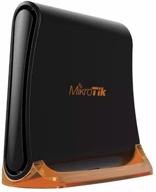
📶 High-Performance MikroTik hAP Mini RB931-2nD: Small 2GHz Wireless Access Point, 3x 10/100 Ethernet Ports, 650MHz CPU & RouterOS

24 Review

Ubiquiti NanoStation locoM2 2.4GHz airMax 8dBi CPE - Indoor/Outdoor High Performance Wireless Device

30 Review
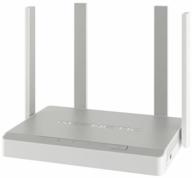
Wi-Fi router Keenetic Hero 4G KN-2310, white

76 Review
Another interesting products
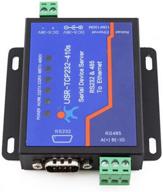
🔌 USR-TCP232-410s: RS232/RS485 Serial to Ethernet Adapter/IP Device Server with DHCP/DNS Support

4 Review
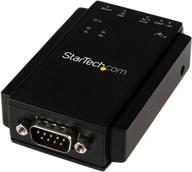
🔌 StarTech.com NETRS232 Serial to IP Ethernet Device Server - DIN Rail Mountable - Serial Device Server - Serial Over IP Device Server (Black)

4 Review
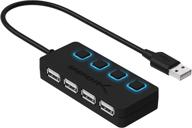
HB-UMLS Sabrent USB 2.0 Hub with 4 Ports and LED Power Switches for Each Port

12 Review
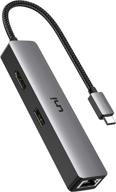
🔌 uni USB C Hub with Ethernet Adapter, 4K HDMI, Gigabit Ethernet, and 3 USB 3.0 Ports for MacBook Pro, iPad Pro, XPS

11 Review

